
Antonio Muñoz Molina literary route

The itinerary of Antonio Muñoz Molina in the province of Jaén focuses exclusively on Úbeda, which he brings to life through Magina, mainly in Beatus Ille, El Jinete Polaco (The Polish Horseman) and Plenilunio(Full Moon)
See route
Antonio Muñoz Molina is considered one of the best novelists in the Spanish language in recent years, winning numerous awards. Muñoz Molina has important awards and recognitions to his credit. Icaro Award, Critics Award and National Award for Literature, Planeta Award and Prince of Asturias Award for Literature, in 1995 he became the youngest member to be elected by the Royal Spanish Academy (RAE) to occupy the seat “u” ( lowercase u).
Antonio Muñoz Molina’s connection with Jaén is not only due to the fact that he is a native of Úbeda, but also because he uses it as a literary resource to frame some of his works as a “model of the city” which he calls “Mágina” and, Although it cannot be identified exactly with her, many of the spaces, situations, experiences and characters coincide with his native Úbeda: Plaza del Reloj /The Clock Square), the statue of General Orduña, the House of Towers, the Barrio de San Lorenzo, the Sacred Chapel of El Salvador, the viewpoints of the city wall …
“More than a portrait, Mágina looks like a model of the city, a scale model of the short world in which most people live their lives” (…).
Antonio Muñoz Molina. Article “Between Úbeda and Mágina”. 1996
The author names this imaginary city “Mágina” in honor of the mountain massif that, in his childhood and adolescence, he could glimpse on the horizon from the viewpoints of Úbeda.
Length of the route
2,6 kilómeters
Estimated duration
5 hours
Type of route
On foot
PLACES THAT MAKE UP THE ROUTE
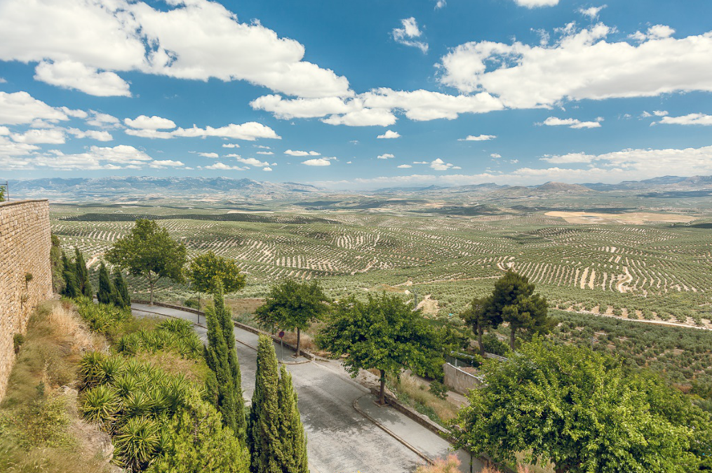
Viewpoints of the wall
The scenes of his childhood, the landscape of his native Úbeda and the remoteness of the Guadalquivir valley, are continuously present in Muñoz Molina’s work, as the author himself reveals: “(…) I like many places, but I look at the landscape of the Guadalquivir valley from the walls of my city and that landscape moves me in a way that no other moves me. (…) ” Interview with Antonio Muñoz Molina. Librújula Magazine. February 25, 2016. An intimacy revealed in many of his novels and where the viewpoints of Úbeda serve as a watchtower to reveal the aesthetic qualities and…
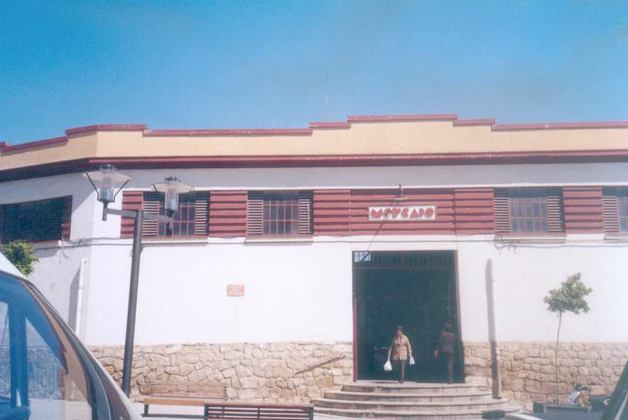
Food Market
We will continue on the itinerary with a space constantly mentioned by Muñoz Molina in his novel The Polish Horseman, Mercado de Abastos( Food Market). Here his father used to come every morning to sell the products hard-harvested in the family garden. (…) “It should have dawned by now, his father would be in the market ordering the damp and shiny vegetables on the marble counter, maybe wondering from time to time where he was, where to of those cities he dreamt as a teenager would his stray profession of interpreter might have taken him. ” (…) Antonio Muñoz Molina.…
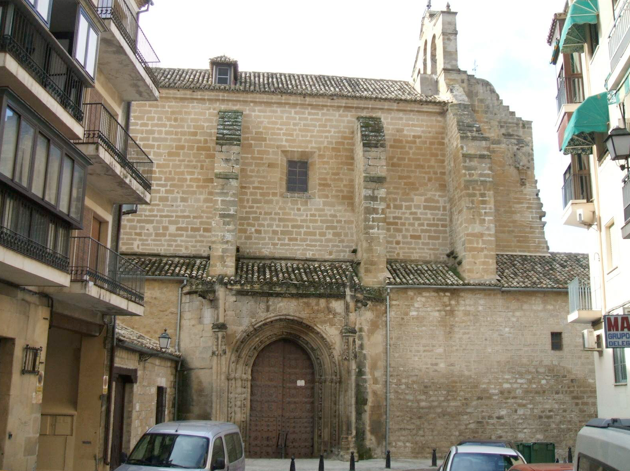
Church of San Isidoro
The Church of San Isidoro is a place that Muñoz Molina sometimes recreates in his novels, as he does in The Polish Horseman, where, in addition to capturing the “atmosphere” of Magina, he uses it to locate some of his peculiar characters, such as its bullfighting parish priest. (…) He recalled that there was no light in that narrow street, which lead to the San Isidoro clearing, with its fountain whose flow he heard at the same time as the splash in the mud of a horse’s hooves, which shaking his head, made the harness of a car rattle] ”(…)…
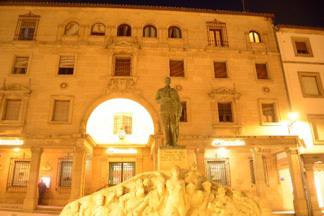
Statue of General Orduña
General Leopoldo Saro was a prominent military and politician in the first quarter of the 20th century. He had family ties with the province of Jaén, and was the promoter of numerous activities of a social, cultural and economic nature. He promoted in Ubeda the opening of the municipal library, various school groups, the Parador de Turismo, the reconstruction of the Casa de las Torres as the School of Arts and Crafts and the Ideal Cinema Theater. He also contributed to the development of the Baeza-Utiel railway line, although it never came into operation. It comes to no surprise that…
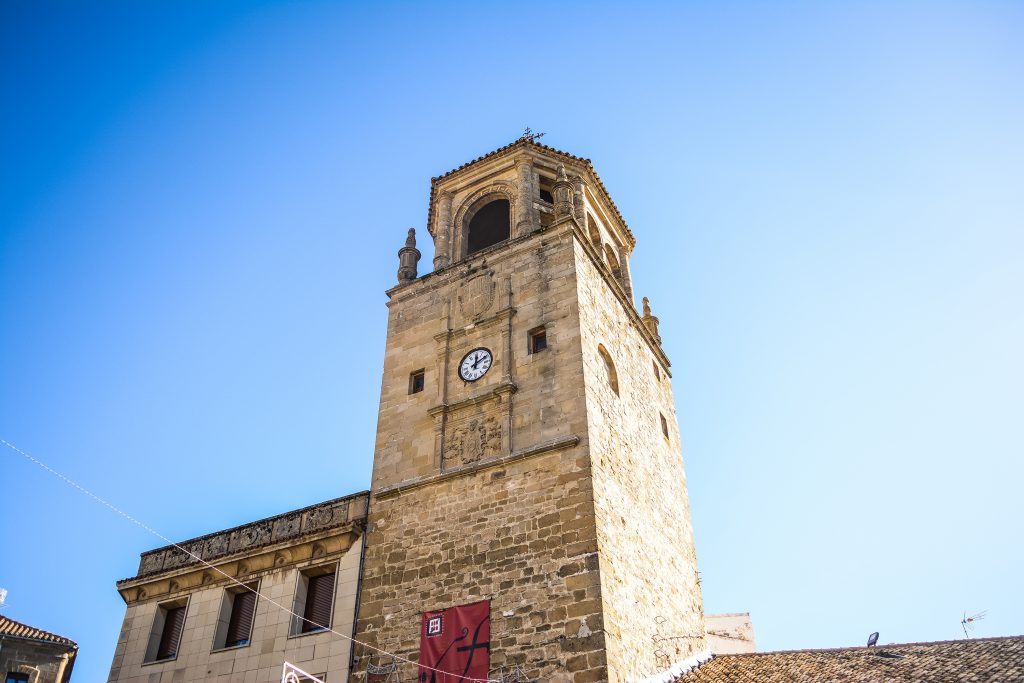
The clock tower
The Clock Tower is located in the Plaza de Andalucía, next to the Tourist Office. It has its origin in a tower belonging to the Arab wall, built in the 13th century and was part of the defense of the main entrance to the town. It was not until the middle of the 16th century when the tower was adapted to house the clock, and today it constitutes a symbolic element of the town and a magnificent place to see Úbeda from a bird’s eye view, apart from housing the oldest bells in the city. For Antonio Muñoz Molina, the…
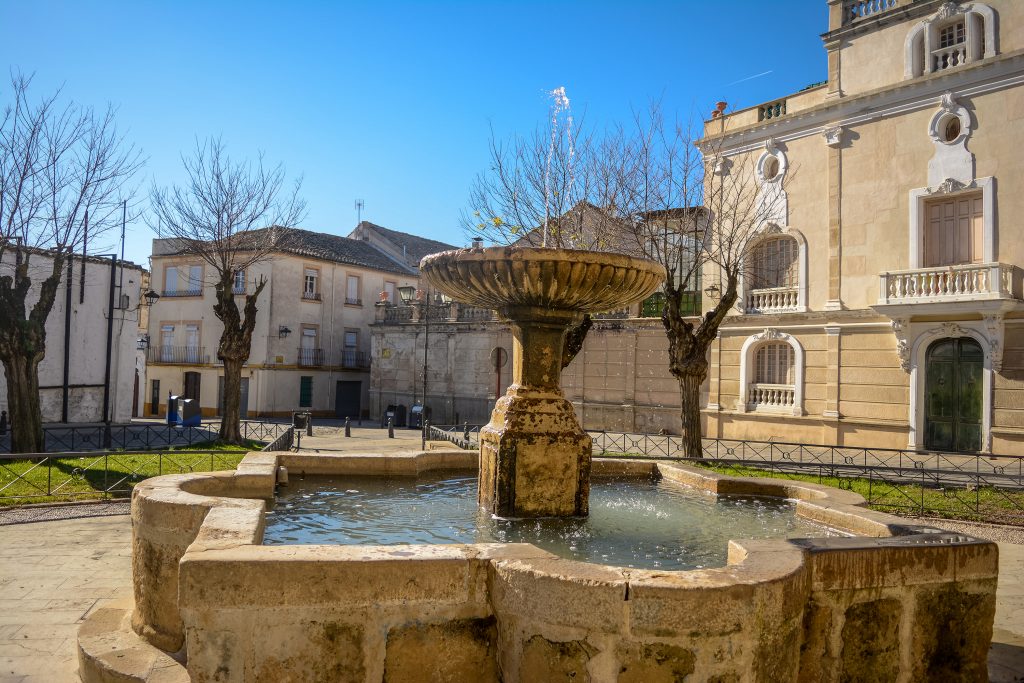
Palace of the Orozco
Strolling around, we approach the Plaza de San Pedro, where the Palacio de los Orozco is located, the only example in Úbeda of 19th century palatial architecture, with French influence and modernist touches. The Palacio de los Orozco is one of the settings where Antonio Muñoz Molina develops the action of his novel Beatus Ille in Mágina. “The palace is older than the acacias and hedges, but the fountain was already there when they built it, brought from Italy four centuries ago by a duke who was very devoted to Michelangelo […]” Antonio Muñoz Molina. Beatus Ille.
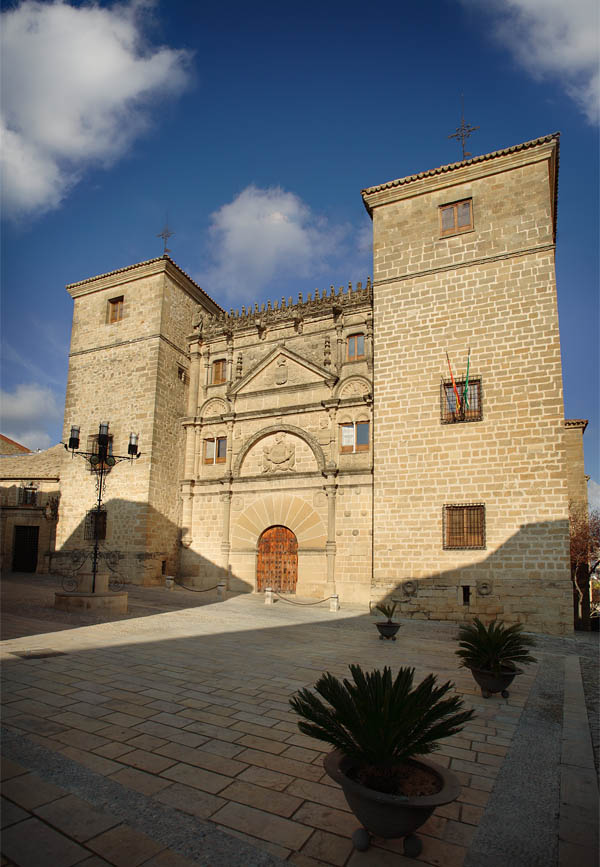
La Casa de las Torres (House of the Towers)
Casa de las Torres is a palace in the style of an urban tower palace (hence its popular name) and currently houses the School of Arts and Crafts of Úbeda, with studies of Artistic Cabinetmaking, Engraving and Stamping Techniques, Projects and Direction of Decoration Works and Bachelor of Arts. The palace is a space widely mentioned by Antonio Muñoz Molina in his work The Polish Horseman, novelizing the legend of “The Immured”, a female corpse discovered at the beginning of the 20th century after renovation works on the palace. The remains are assigned to Lady Ana de Orozco. According to…
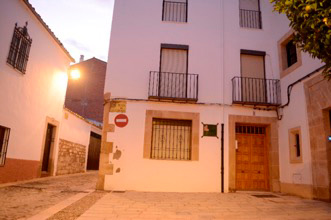
Residence of Antonio Muñoz Molina
The house where Muñoz Molina lived is located as the nerve center of the San Lorenzo neighborhood, within the analogous square, a location he used as a resource in different parts of the novel The Polish Horseman. The house, which is still family-owned, cannot be visited, but displays a plaque on the façade that recalls the uniqueness of being the home of such an illustrious author. “[…] and that night, in his bedroom, from whose window he could see in the moonlight the facade of the House of the Towers and the oblique shadows of the gargoyles […]” Antonio Muñoz…
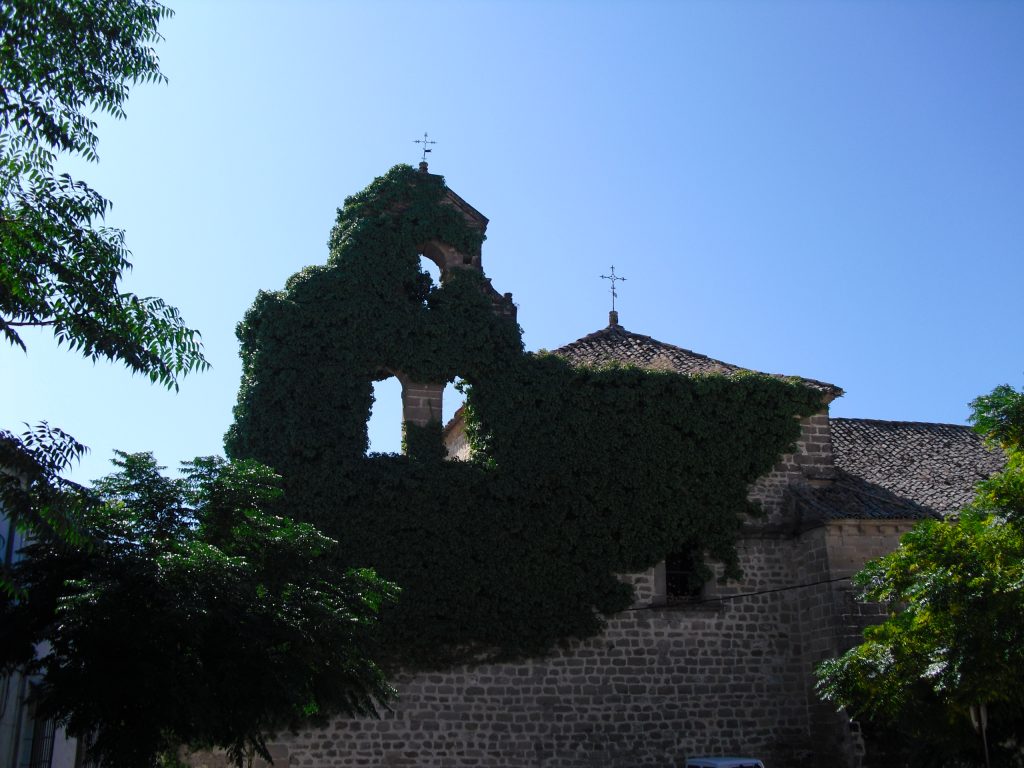
San Lorenzo neighborhood
Going down Calle Cava, we find the peculiar neighborhood of San Lorenzo, a place where Antonio Muñoz Molina spent his childhood and which becomes another protagonist in his work, with its cobbled streets, white houses, churches and palaces … . The author recreates in this neighborhood a literary space that is a key element to understand and interpret the action of the story, identifying specific spaces in the neighborhood such as the Cava gardens (both in Full Moon and in The Polish Horseman), the Church of San Lorenzo, the Puerta de Granada, the cobbled streets or its viewpoints. The Cava…

Sculpture to the Fallen
The Town Hall square, also known as the Plaza de the Fallen for the sculpture it houses, stands between the Vázquez de Molina square, where you can find authentic Renaissance works such as the Sacra Capilla del Salvador and the San Lorenzo neighborhood. This is where Antonio Muñoz Molina lived his childhood and youth. A sculpture that is located in the center of the square and is dedicated to all those who died in the Spanish Civil War. It was made in 1951 by the Cadiz-born image master Juan Luis Vasallo. The Ubeda author makes mention of this square and…

Sacred Chapel of the Savior
The Sacred Chapel of the World’s Savior)is the funerary pantheon of one of the most important figures of the time, Francisco de los Cobos, secretary of Emperor Carlos V. The temple is one of the most successful examples of the Spanish Renaissance, so it is a must see in Úbeda. But what really links this temple to the figure of Muñoz Molina is its façade, where the representation of the “juancaballos” is carved, mythical creatures from the Sierra de Mágina that the author rescues to echo the phenomena and legends of the rural spaces. Although the real image chiseled on…